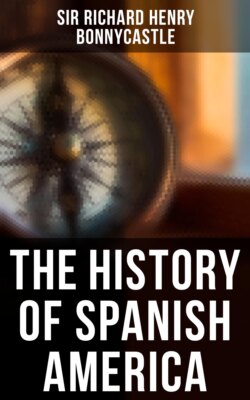Читать книгу The History of Spanish America - Sir Richard Henry Bonnycastle - Страница 28
На сайте Литреса книга снята с продажи.
NEW SANTANDER AND TEXAS, AND PANUCO, OR POTOSI.
ОглавлениеThese provinces extend for an immense length along the shores of the Mexican gulf, and commencing at the estuary of the river Mexicano follow the course of that river; Coaguila then bounds them on the north, New Leon on the east, Mexico on the south, and the gulf of Mexico on the west. The Rio Bravo del Norte flows through the centre of these provinces.
Numerous herds of cattle feed in this country, which abounds in fruit, corn, &c. A chain of mountains, from the main ridge, runs through New Santander, and is called the Sierra Gorda; from which the district has sometimes been named; this chain abounds in mines. It was not till 1748, that this district or province was wholly subdued, in which year the capital was built. There is a fine harbour attached to it, which was first observed in 1739.
The richest mines are in Panuco or Potosi, and the chief of these is Catorce, or La Purissima Conception; it was discovered in 1773, and is said to yield annually to the amount of from seven to 800,000l. sterling of silver. Charcas is the next mining station of note, and is in the north of Panuco or Potosi.
The remaining towns of most importance in the intendancy of San Luis Potosi, are New Santander, the capital of the province of that name, with its port of Soto la Marina, which however does not admit vessels that draw more water than six feet.
Linares, in New Leon, between the Rio del Norte, and the Tigre, and—
San Antonio de Bejar, capital of Texas, between the two rivers Nogales and St. Antonio.
The most eastern fort of this intendancy is the Presidio of Nacogdoch, which is 68 leagues from the United Statesʼ Fort Clayborne.
The great river of this government is the Rio del Norte, which enters the Mexican gulf in about 25° 40ʹ north latitude, and 97° 20ʹ west longitude. The other rivers of most note are, beginning from the east, the Rio Mexicano, Rio de Sabina, Rio de la Trinidad, Rio Colorado de Texas, Rio St. Antonio, Rio de las Nueces, Rio de Tigre, to the south of the great Rio del Norte, and the Rio Panuco or Tampico; of all of which very little is known.
